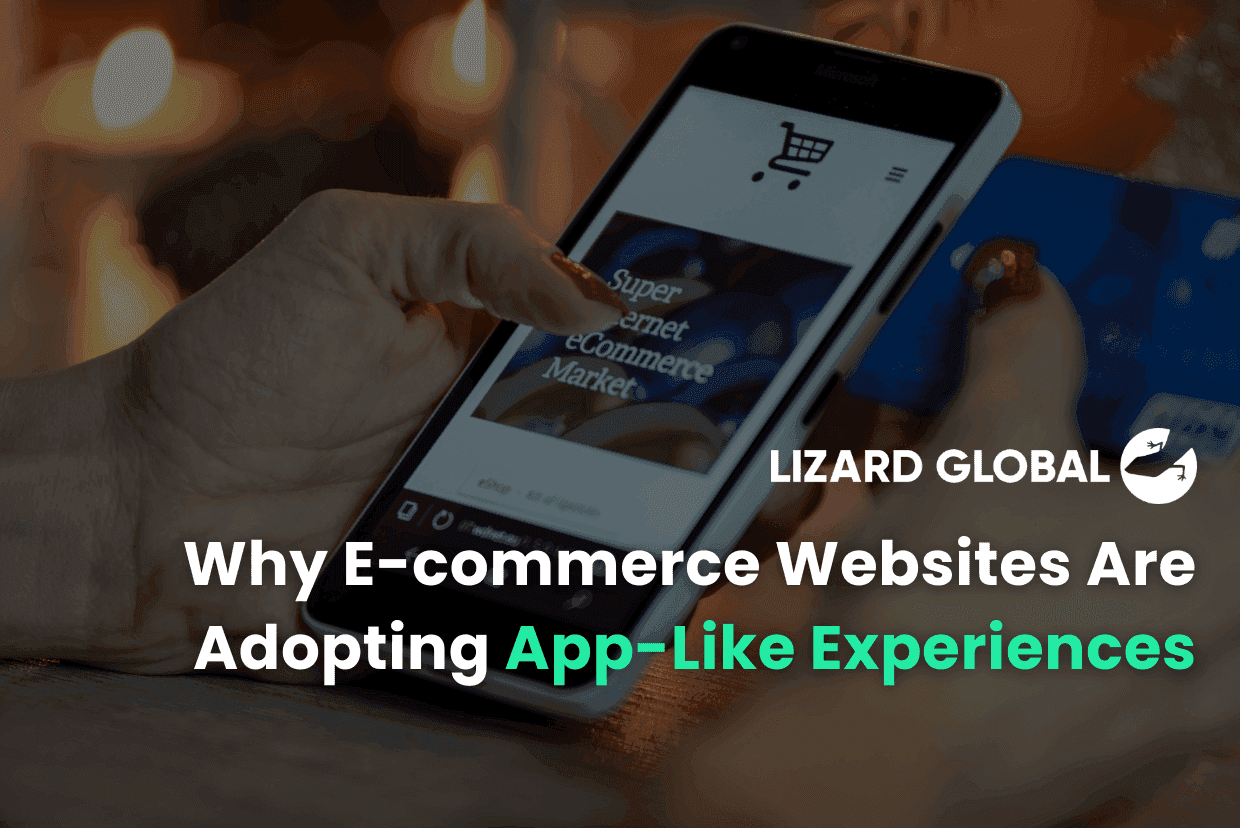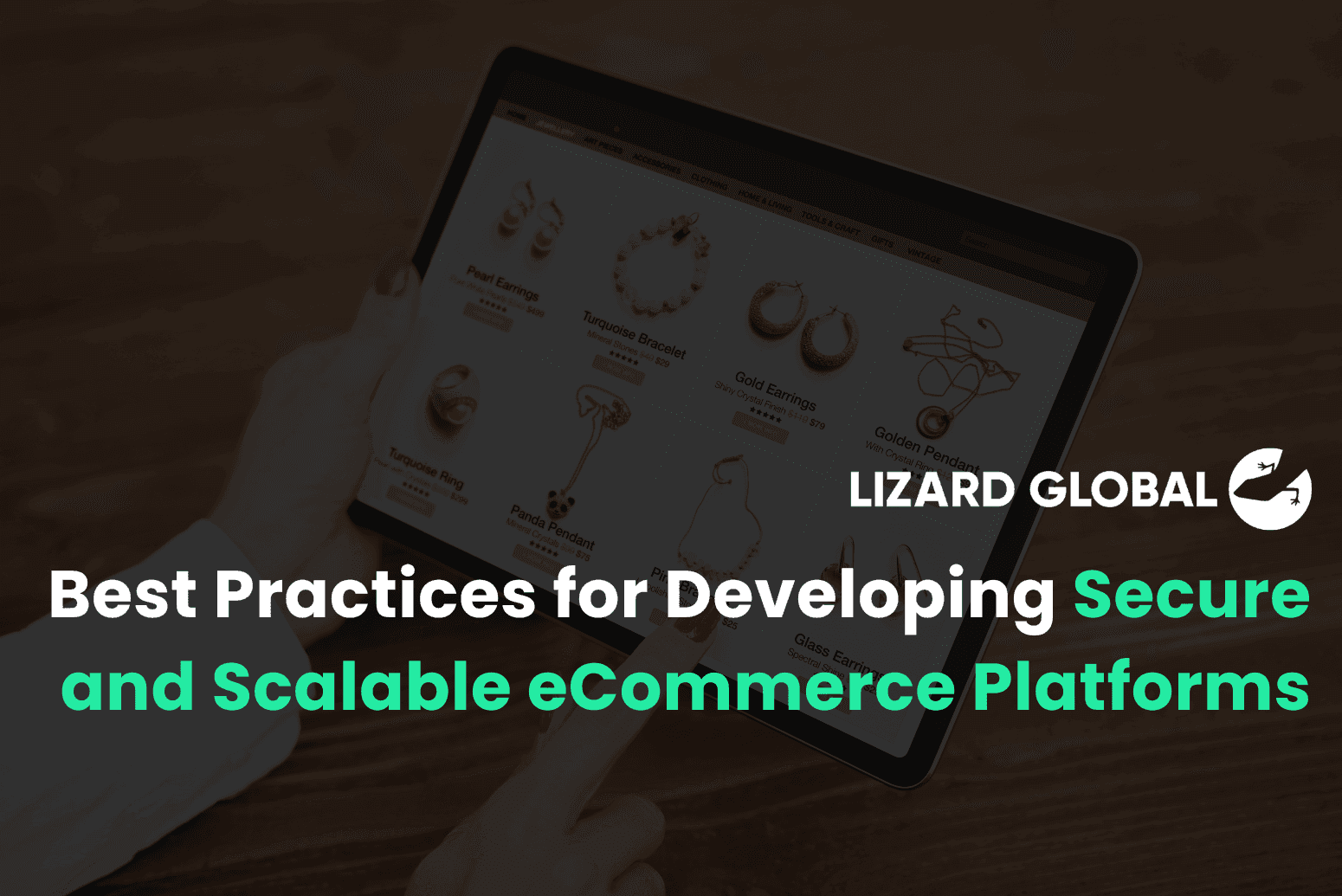E-commerce
Saleor
+ 6 more ...
Popular Ecommerce Platforms Comparison: Saleor, Magento, Shopify, Medusa, WooCommerce

11 Sep 2025
by Nadiy, Senior Content Writer
Contributor: Chathuri, Head of Engineering, Arif Khan, Senior Software Developer

11 Sep 2025
by Nadiy, Senior Content Writer
Contributor: Chathuri, Head of Engineering, Arif Khan, Senior Software Developer
E-commerce
Saleor
Shopify
Medusa
WooCommerce
eCommerce
Mobile App Development
Software Development
Popular Ecommerce Platforms Comparison: Saleor, Magento, Shopify, Medusa, WooCommerce
Table of contents
Contact us
We will get back to you in the next 48 hours.
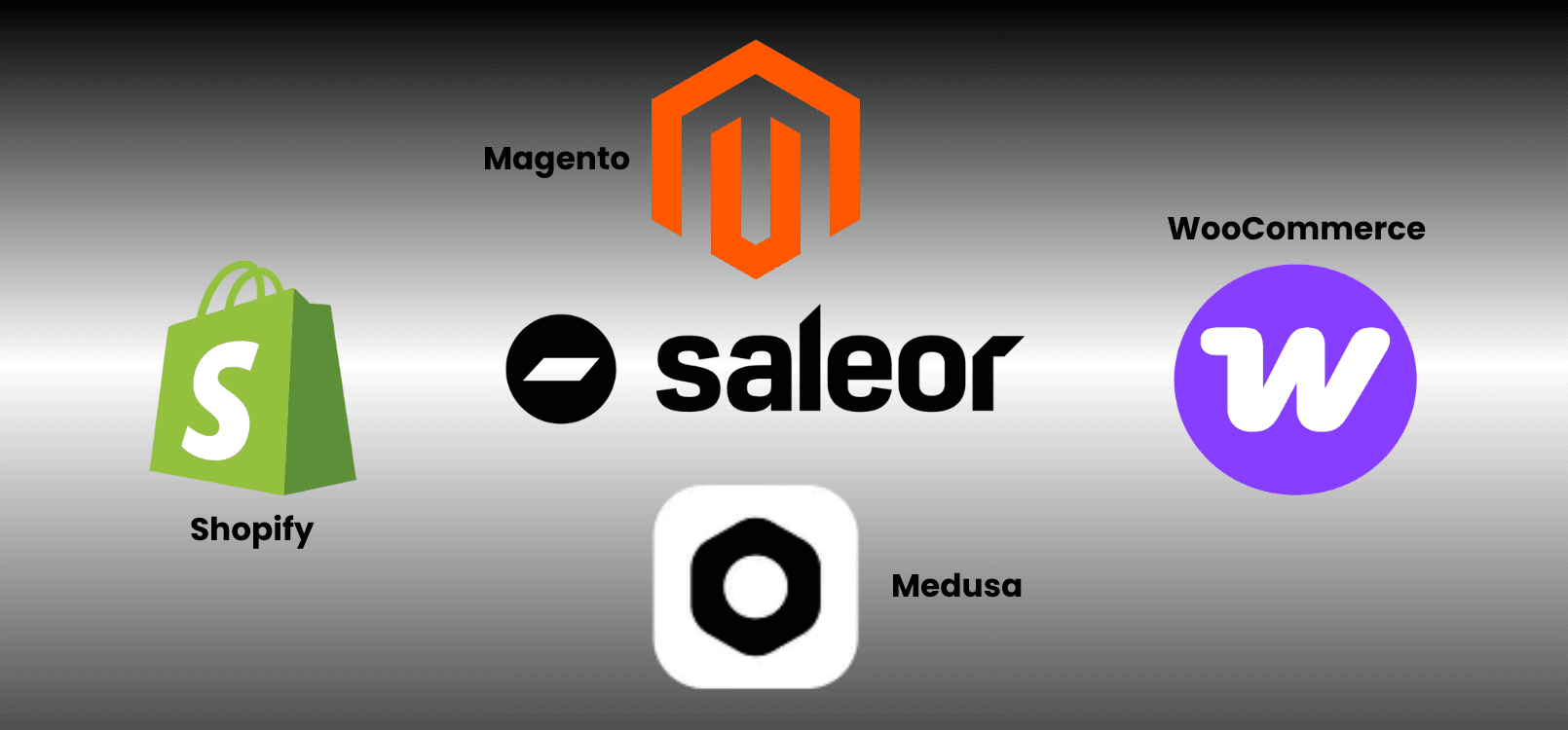
Choosing between Saleor, Magento, Shopify, Medusa, and WooCommerce can shape the future of your online store. This guide compares their strengths, weaknesses, and best use cases to help you select the right ecommerce platform for your business.
key takeaways
The backbone of every successful online store (Ecommerce platform) isn’t just its design or product lineup—it’s the platform it’s built on. With countless ecommerce frameworks available — Magento, Shopify, Medusa, WooCommerce, and Saleor — the question isn’t just which one works, but which one works best for your business goals.
To unpack this, we sat down with Chathuri, Head of Engineering, and Arif, Senior Software Developer at Lizard Global. Together, they shared insights from years of building ecommerce solutions across various frameworks — and explained why Saleor has become a favorite among our development team.
The Evolution of Ecommerce Frameworks
Before diving into specific platforms, Chathuri explains how ecommerce frameworks have evolved:
“All frameworks are built on the basics — HTML and CSS. But frameworks create a higher-level environment that helps developers build complex systems faster and more efficiently.”
Traditionally, ecommerce systems came as fully integrated platforms, meaning the frontend (what users see) and backend (where data is stored) were tightly coupled. While this made setup easy, it limited flexibility.
Now, the trend is shifting towards headless commerce — where the backend operates independently, giving developers complete control over how the frontend looks, feels, and performs. Arif adds:
“Headless architecture gives us freedom. We can customize the storefront, integrate modern technologies, and control everything from the infrastructure to performance optimization.”
Magento — The Veteran Workhorse
Magento has long been a favorite among large retailers for its robustness and flexibility. It supports large product catalogs, custom workflows, and advanced user roles. However, it comes with tradeoffs — namely, high development and maintenance costs.
Since Magento is built on PHP, hosting and scaling require careful setup. It’s powerful, yes, but not the most efficient choice for businesses looking for agility or fast time-to-market.
“Magento is reliable, but it’s heavy,” Chathuri explains. “You need strong infrastructure and constant maintenance to keep it running smoothly.”
Key Advantages
- Enterprise-Level Customization: Magento supports highly tailored features and large product catalogs without compromising functionality.
- Scalable Infrastructure: Ideal for medium to large enterprises handling high traffic and complex workflows.
- Rich Extension Marketplace: Thousands of third-party plugins to extend functionality and integrate with other systems.
- Multi-Store & Multi-Language Support: Seamlessly manage several storefronts and regional settings under one platform.
- Robust Community: A well-established developer ecosystem and extensive documentation.
Considerations
- Built on PHP, so it requires technical expertise for hosting and scaling
- Maintenance and updates can be costly
- Performance can slow without strong server infrastructure
Shopify — Simple and Accessible
Shopify’s biggest strength is its ease of use. It’s a SaaS (Software-as-a-Service) platform, meaning hosting, updates, and security are all managed by Shopify. For businesses without an in-house development team, Shopify makes launching an online store quick and simple. But this convenience comes with limitations.
“For teams like ours that want to customize the frontend or integrate unique payment gateways, Shopify can feel restrictive,” Arif notes.
Key Advantages
- Quick Deployment: Set up a fully functional store in hours, not weeks.
- All-in-One Hosting & Maintenance: Shopify manages servers, updates, and security, reducing operational overhead.
- User-Friendly Interface: Intuitive tools make it easy to add products, manage orders, and track analytics.
- App Ecosystem: Thousands of integrations for marketing, shipping, payments, and more.
- Reliable Performance: Optimized hosting ensures fast load times and high uptime globally.
Considerations
- Limited customization for frontend and backend
- Transaction fees if not using Shopify Payments
- You’re locked into their ecosystem — full control isn’t possible
Want to find out how much it costs to build your dream app or web app?
WooCommerce — The Familiar Choice
WooCommerce turns WordPress sites into ecommerce stores. It’s free, widely used, and great for small to medium businesses that already rely on WordPress.
However, scalability and performance can become challenges as stores grow. Being PHP-based, WooCommerce also depends heavily on plugins — which can cause compatibility or performance issues over time.
“WooCommerce works well for smaller projects,” says Arif. “But once you start needing advanced workflows or multi-channel support, it gets complicated to manage.”
Key Advantages
- Open Source & Free to Use: Full ownership and no vendor lock-ins, with the freedom to customize.
- Seamless WordPress Integration: Easily convert an existing WordPress site into an ecommerce store.
- Vast Plugin Library: Extend functionality through thousands of community-built plugins.
- Flexible Design Options: Compatible with a wide range of WordPress themes and page builders.
- Strong Community Support: Large user base and developer network for troubleshooting and guidance.
Considerations
- Limited scalability — performance drops with large catalogs
- Plugin conflicts can cause technical issues
- Requires PHP hosting and frequent maintenance
“WooCommerce is great for smaller stores,” Arif explains. “But for businesses aiming to grow fast or handle complex workflows, it can get tricky.”
Medusa — The Promising Newcomer
Medusa is a relatively new player gaining attention in the headless ecommerce space. It’s a modern, headless ecommerce framework designed to give developers more flexibility than traditional systems. It’s inspired by the same principles as Saleor, focusing on open APIs and modularity. However, both Chathuri and Arif agree that Medusa is still maturing.
“It’s promising, but we’re waiting to see how it evolves. It’s not as stable as Saleor yet, and it’s moving away from open-source toward a SaaS model,” says Chathuri.
Key Advantages
- Modern Headless Architecture: Enables total flexibility between backend logic and frontend presentation.
- Built for Developers: Offers strong API-first design with modular components for easy customization.
- Lightweight & Fast: Designed for performance and scalability from the ground up.
- Integration-Friendly: Works well with modern frameworks and tools, simplifying workflow automation.
- Growing Community: Backed by an active, innovation-driven open-source community (though still maturing).
Considerations
- Still maturing — less stable than older platforms
- Smaller community and support base
- Gradually shifting from open-source to SaaS
For now, Lizard Global is keeping an eye on Medusa’s development before fully adopting it for client projects.
Saleor — Our Preferred Platform for Complex, Scalable Ecommerce
So, where does Saleor stand among all these platforms?
For Lizard Global, Saleor strikes the perfect balance between flexibility, scalability, and developer freedom. It’s headless, open source, and built on a GraphQL-first architecture, which allows for lightning-fast data querying, lightning-fast, scalable, and perfectly suited to our modern development stack like Next.js.
Arif explains,
“Saleor gives us full control over customization, hosting, and infrastructure. We can self-host, scale our servers when needed, and integrate easily with our existing microservices. It fits naturally into our development workflow.”
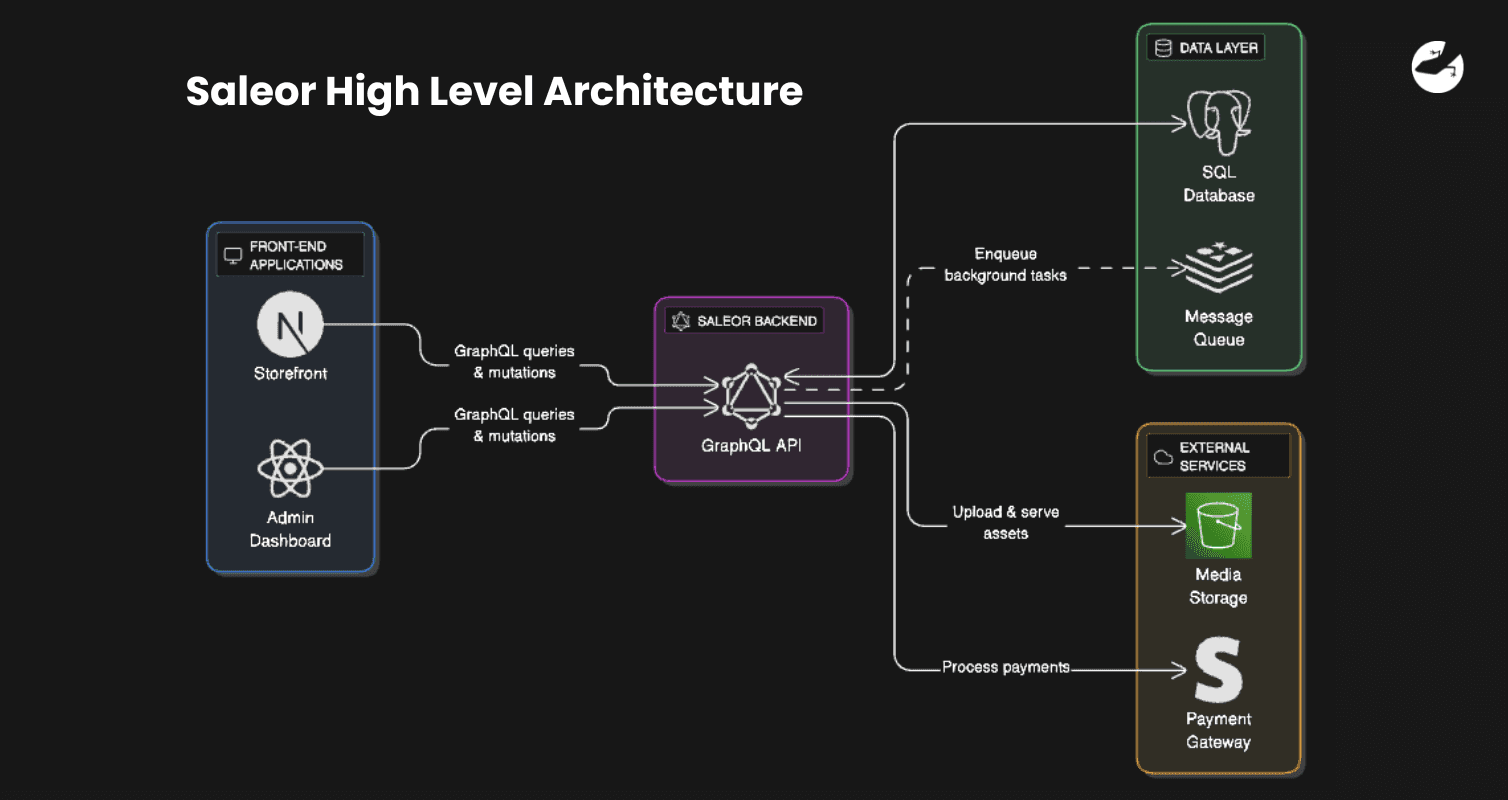
Key Advantages
Here’s how Saleor empowers our development team and clients alike:
- Customizable & Scalable: Saleor’s architecture allows us to build highly tailored solutions without affecting performance.
- Self-Hosting Freedom: We can control hosting costs and infrastructure. For example, if a client’s platform needs to handle one million requests on weekends (like Drinkies), we can scale servers temporarily and bring them down afterward — optimizing both cost and performance.
- Multi-Channel & Multi-Currency Ready: Saleor handles complex workflows like region-specific product restrictions and multi-currency sales out of the box.
- Decoupled Architecture: Saleor’s backend, admin dashboard, and storefront are independent — giving full flexibility in frontend design and user experience.
- Developer-Friendly Ecosystem: Open-source and built for microservices, it allows our team to extend functionalities (like integrating niche payment gateways such as BigPay) without touching the core system.
- SEO-Optimized Integration: With Next.js integration, Saleor - built sites are inherently optimized for performance and SEO visibility.
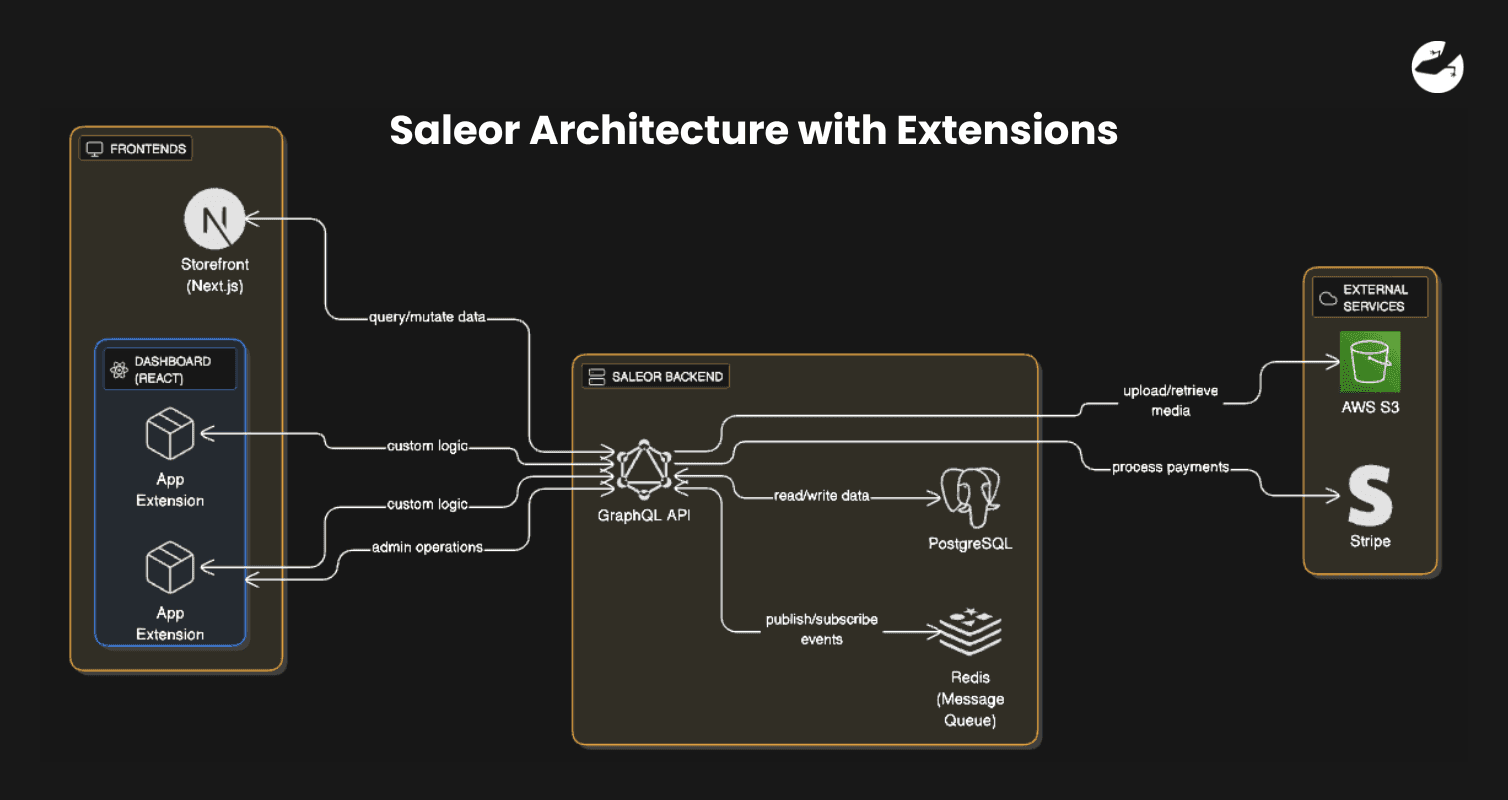
Considerations
- Slightly steeper learning curve for new developers
- Longer initial setup time compared to SaaS solutions
- Requires some technical expertise for hosting and scaling
“There’s a learning curve,” Chathuri admits. “But the tradeoff is worth it. Once you’re familiar with Saleor’s environment, you get unmatched control, flexibility, and scalability.”
How to Choose the Right Ecommerce Platform
Choosing an ecommerce framework isn’t about picking the most popular name — it’s about matching the platform to your business model, technical capabilities, and growth ambitions.
Here’s what our experts suggest considering before deciding:
- Technical Expertise – Do you have an in-house dev team? Platforms like Saleor and Magento require more hands-on work, while Shopify or WooCommerce handle most of it for you.
- Customization Needs – If you need unique checkout flows, niche payment gateways, or custom workflows, open-source or headless platforms give you more freedom.
- Scalability – Growing businesses need flexibility. Open-source frameworks like Saleor let you scale infrastructure on your terms.
- Budget & Time-to-Market – SaaS platforms like Shopify are faster to launch, but open-source options may save money long-term by avoiding recurring fees.
- Long-Term Control – Consider whether you want to fully own your platform and data — something only open-source frameworks like Saleor or WooCommerce can offer.
“Every platform has a place,” says Arif. “The key is knowing what your project needs today — and what it might need a year from now.”
When to Use Each Platform
Every ecommerce platform has its strengths — the key is choosing one that fits your business model:
- Use Saleor if you’re building a highly customized, developer-led, headless commerce solution and want full control over infrastructure and costs.
- Use Shopify if you need a turnkey store with minimal engineering effort and are fine operating within a SaaS ecosystem.
- Use Magento if you need a large-scale enterprise solution with complex catalog management.
- Use WooCommerce if you’re extending an existing WordPress site for small to medium online stores.
- Keep an eye on Medusa if you’re experimenting with emerging, modern headless frameworks — but it may need more time to mature.
Building Smarter, Scalable Ecommerce with Lizard Global
At Lizard Global, we don’t believe in one-size-fits-all ecommerce solutions. Our job is to identify the right platform for each client’s unique goals — whether that’s Shopify for a fast startup launch, Magento for enterprise-grade stores, or Saleor for complex, headless systems that demand flexibility and power.

Our team of engineers and developers, led by experts like Chathuri and Arif, have deep experience in crafting ecommerce ecosystems that balance performance, scalability, and creative freedom. With projects likeDrinkies, Tayarlor, CNCDR, and MESH, we’ve proven that the right technology stack can transform online retail into a seamless, high-performing digital experience.
When it comes to ecommerce innovation, Lizard Global is not just building platforms — we’re engineering future-ready digital commerce ecosystems. Reach out today!
Join 2000+ subscribers
Stay in the loop with everything you need to know

Choosing between Saleor, Magento, Shopify, Medusa, and WooCommerce can shape the future of your online store. This guide compares their strengths, weaknesses, and best use cases to help you select the right ecommerce platform for your business.
The backbone of every successful online store (Ecommerce platform) isn’t just its design or product lineup—it’s the platform it’s built on. With countless ecommerce frameworks available — Magento, Shopify, Medusa, WooCommerce, and Saleor — the question isn’t just which one works, but which one works best for your business goals.
To unpack this, we sat down with Chathuri, Head of Engineering, and Arif, Senior Software Developer at Lizard Global. Together, they shared insights from years of building ecommerce solutions across various frameworks — and explained why Saleor has become a favorite among our development team.
The Evolution of Ecommerce Frameworks
Before diving into specific platforms, Chathuri explains how ecommerce frameworks have evolved:
“All frameworks are built on the basics — HTML and CSS. But frameworks create a higher-level environment that helps developers build complex systems faster and more efficiently.”
Traditionally, ecommerce systems came as fully integrated platforms, meaning the frontend (what users see) and backend (where data is stored) were tightly coupled. While this made setup easy, it limited flexibility.
Now, the trend is shifting towards headless commerce — where the backend operates independently, giving developers complete control over how the frontend looks, feels, and performs. Arif adds:
“Headless architecture gives us freedom. We can customize the storefront, integrate modern technologies, and control everything from the infrastructure to performance optimization.”
Magento — The Veteran Workhorse
Magento has long been a favorite among large retailers for its robustness and flexibility. It supports large product catalogs, custom workflows, and advanced user roles. However, it comes with tradeoffs — namely, high development and maintenance costs.
Since Magento is built on PHP, hosting and scaling require careful setup. It’s powerful, yes, but not the most efficient choice for businesses looking for agility or fast time-to-market.
“Magento is reliable, but it’s heavy,” Chathuri explains. “You need strong infrastructure and constant maintenance to keep it running smoothly.”
Key Advantages
- Enterprise-Level Customization: Magento supports highly tailored features and large product catalogs without compromising functionality.
- Scalable Infrastructure: Ideal for medium to large enterprises handling high traffic and complex workflows.
- Rich Extension Marketplace: Thousands of third-party plugins to extend functionality and integrate with other systems.
- Multi-Store & Multi-Language Support: Seamlessly manage several storefronts and regional settings under one platform.
- Robust Community: A well-established developer ecosystem and extensive documentation.
Considerations
- Built on PHP, so it requires technical expertise for hosting and scaling
- Maintenance and updates can be costly
- Performance can slow without strong server infrastructure
Shopify — Simple and Accessible
Shopify’s biggest strength is its ease of use. It’s a SaaS (Software-as-a-Service) platform, meaning hosting, updates, and security are all managed by Shopify. For businesses without an in-house development team, Shopify makes launching an online store quick and simple. But this convenience comes with limitations.
“For teams like ours that want to customize the frontend or integrate unique payment gateways, Shopify can feel restrictive,” Arif notes.
Key Advantages
- Quick Deployment: Set up a fully functional store in hours, not weeks.
- All-in-One Hosting & Maintenance: Shopify manages servers, updates, and security, reducing operational overhead.
- User-Friendly Interface: Intuitive tools make it easy to add products, manage orders, and track analytics.
- App Ecosystem: Thousands of integrations for marketing, shipping, payments, and more.
- Reliable Performance: Optimized hosting ensures fast load times and high uptime globally.
Considerations
- Limited customization for frontend and backend
- Transaction fees if not using Shopify Payments
- You’re locked into their ecosystem — full control isn’t possible
Want to find out how much it costs to build your dream app or web app?
WooCommerce — The Familiar Choice
WooCommerce turns WordPress sites into ecommerce stores. It’s free, widely used, and great for small to medium businesses that already rely on WordPress.
However, scalability and performance can become challenges as stores grow. Being PHP-based, WooCommerce also depends heavily on plugins — which can cause compatibility or performance issues over time.
“WooCommerce works well for smaller projects,” says Arif. “But once you start needing advanced workflows or multi-channel support, it gets complicated to manage.”
Key Advantages
- Open Source & Free to Use: Full ownership and no vendor lock-ins, with the freedom to customize.
- Seamless WordPress Integration: Easily convert an existing WordPress site into an ecommerce store.
- Vast Plugin Library: Extend functionality through thousands of community-built plugins.
- Flexible Design Options: Compatible with a wide range of WordPress themes and page builders.
- Strong Community Support: Large user base and developer network for troubleshooting and guidance.
Considerations
- Limited scalability — performance drops with large catalogs
- Plugin conflicts can cause technical issues
- Requires PHP hosting and frequent maintenance
“WooCommerce is great for smaller stores,” Arif explains. “But for businesses aiming to grow fast or handle complex workflows, it can get tricky.”
Medusa — The Promising Newcomer
Medusa is a relatively new player gaining attention in the headless ecommerce space. It’s a modern, headless ecommerce framework designed to give developers more flexibility than traditional systems. It’s inspired by the same principles as Saleor, focusing on open APIs and modularity. However, both Chathuri and Arif agree that Medusa is still maturing.
“It’s promising, but we’re waiting to see how it evolves. It’s not as stable as Saleor yet, and it’s moving away from open-source toward a SaaS model,” says Chathuri.
Key Advantages
- Modern Headless Architecture: Enables total flexibility between backend logic and frontend presentation.
- Built for Developers: Offers strong API-first design with modular components for easy customization.
- Lightweight & Fast: Designed for performance and scalability from the ground up.
- Integration-Friendly: Works well with modern frameworks and tools, simplifying workflow automation.
- Growing Community: Backed by an active, innovation-driven open-source community (though still maturing).
Considerations
- Still maturing — less stable than older platforms
- Smaller community and support base
- Gradually shifting from open-source to SaaS
For now, Lizard Global is keeping an eye on Medusa’s development before fully adopting it for client projects.
Saleor — Our Preferred Platform for Complex, Scalable Ecommerce
So, where does Saleor stand among all these platforms?
For Lizard Global, Saleor strikes the perfect balance between flexibility, scalability, and developer freedom. It’s headless, open source, and built on a GraphQL-first architecture, which allows for lightning-fast data querying, lightning-fast, scalable, and perfectly suited to our modern development stack like Next.js.
Arif explains,
“Saleor gives us full control over customization, hosting, and infrastructure. We can self-host, scale our servers when needed, and integrate easily with our existing microservices. It fits naturally into our development workflow.”

Key Advantages
Here’s how Saleor empowers our development team and clients alike:
- Customizable & Scalable: Saleor’s architecture allows us to build highly tailored solutions without affecting performance.
- Self-Hosting Freedom: We can control hosting costs and infrastructure. For example, if a client’s platform needs to handle one million requests on weekends (like Drinkies), we can scale servers temporarily and bring them down afterward — optimizing both cost and performance.
- Multi-Channel & Multi-Currency Ready: Saleor handles complex workflows like region-specific product restrictions and multi-currency sales out of the box.
- Decoupled Architecture: Saleor’s backend, admin dashboard, and storefront are independent — giving full flexibility in frontend design and user experience.
- Developer-Friendly Ecosystem: Open-source and built for microservices, it allows our team to extend functionalities (like integrating niche payment gateways such as BigPay) without touching the core system.
- SEO-Optimized Integration: With Next.js integration, Saleor - built sites are inherently optimized for performance and SEO visibility.

Considerations
- Slightly steeper learning curve for new developers
- Longer initial setup time compared to SaaS solutions
- Requires some technical expertise for hosting and scaling
“There’s a learning curve,” Chathuri admits. “But the tradeoff is worth it. Once you’re familiar with Saleor’s environment, you get unmatched control, flexibility, and scalability.”
How to Choose the Right Ecommerce Platform
Choosing an ecommerce framework isn’t about picking the most popular name — it’s about matching the platform to your business model, technical capabilities, and growth ambitions.
Here’s what our experts suggest considering before deciding:
- Technical Expertise – Do you have an in-house dev team? Platforms like Saleor and Magento require more hands-on work, while Shopify or WooCommerce handle most of it for you.
- Customization Needs – If you need unique checkout flows, niche payment gateways, or custom workflows, open-source or headless platforms give you more freedom.
- Scalability – Growing businesses need flexibility. Open-source frameworks like Saleor let you scale infrastructure on your terms.
- Budget & Time-to-Market – SaaS platforms like Shopify are faster to launch, but open-source options may save money long-term by avoiding recurring fees.
- Long-Term Control – Consider whether you want to fully own your platform and data — something only open-source frameworks like Saleor or WooCommerce can offer.
“Every platform has a place,” says Arif. “The key is knowing what your project needs today — and what it might need a year from now.”
When to Use Each Platform
Every ecommerce platform has its strengths — the key is choosing one that fits your business model:
- Use Saleor if you’re building a highly customized, developer-led, headless commerce solution and want full control over infrastructure and costs.
- Use Shopify if you need a turnkey store with minimal engineering effort and are fine operating within a SaaS ecosystem.
- Use Magento if you need a large-scale enterprise solution with complex catalog management.
- Use WooCommerce if you’re extending an existing WordPress site for small to medium online stores.
- Keep an eye on Medusa if you’re experimenting with emerging, modern headless frameworks — but it may need more time to mature.
Building Smarter, Scalable Ecommerce with Lizard Global
At Lizard Global, we don’t believe in one-size-fits-all ecommerce solutions. Our job is to identify the right platform for each client’s unique goals — whether that’s Shopify for a fast startup launch, Magento for enterprise-grade stores, or Saleor for complex, headless systems that demand flexibility and power.

Our team of engineers and developers, led by experts like Chathuri and Arif, have deep experience in crafting ecommerce ecosystems that balance performance, scalability, and creative freedom. With projects likeDrinkies, Tayarlor, CNCDR, and MESH, we’ve proven that the right technology stack can transform online retail into a seamless, high-performing digital experience.
When it comes to ecommerce innovation, Lizard Global is not just building platforms — we’re engineering future-ready digital commerce ecosystems. Reach out today!
Join 2000+ subscribers
Stay in the loop with everything you need to know
FAQs

What is the best ecommerce platform for large enterprises?
Is Shopify good for beginners?
Is WooCommerce free to use?
Which platforms are best for headless commerce?
Which platform offers the most customization?
Does Saleor charge transaction fees?
Is Medusa production-ready?
Which platform is best for SEO?
Can I self-host these platforms?
Which platforms let me build custom payment gateways?
How quickly can I launch on each platform?
What about scalability and traffic spikes (e.g., seasonal surges)?
Are there vendor lock-in risks?
Which one should a non-technical small business choose?
How do I pick the right platform for my business?
similar reads


